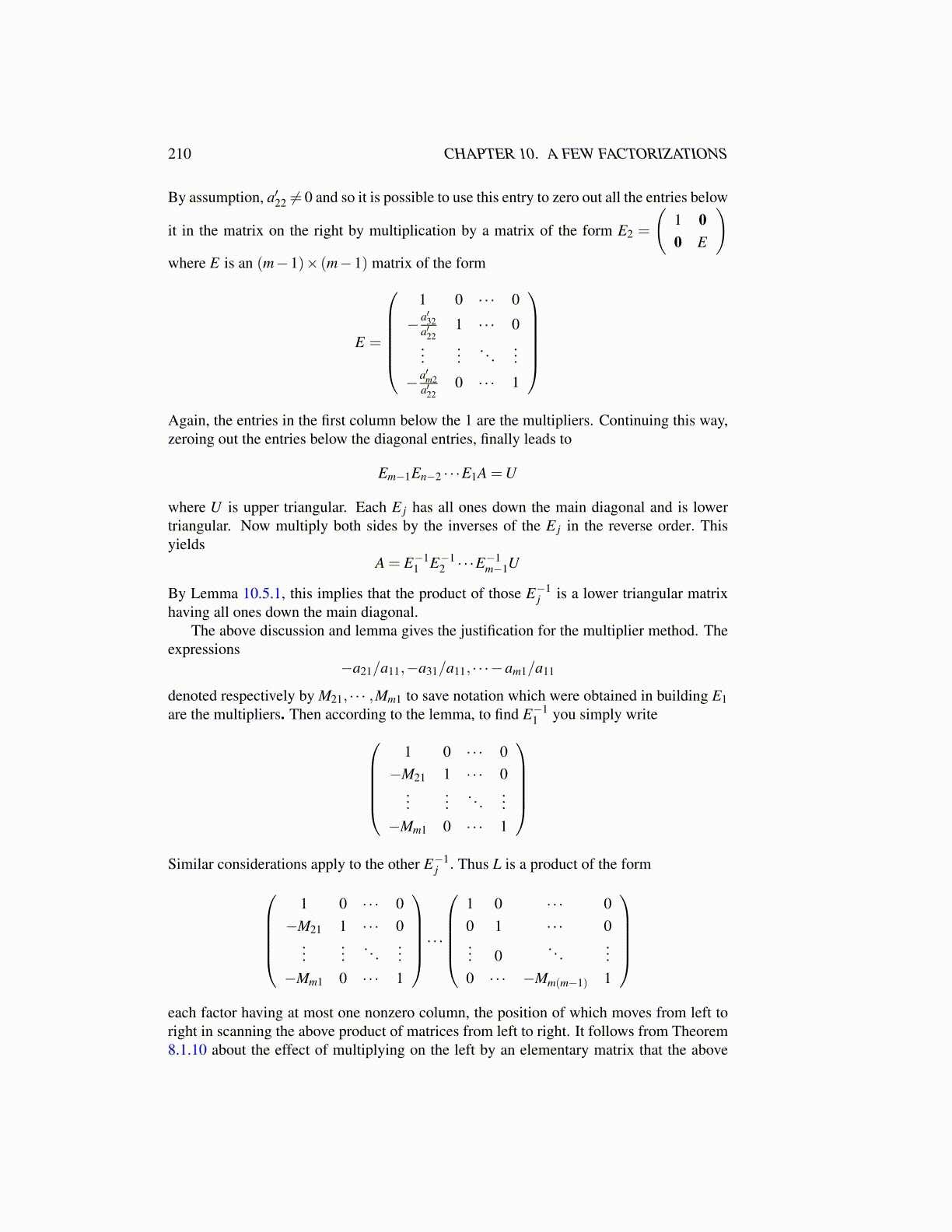
210 CHAPTER 10. A FEW FACTORIZATIONS
By assumption, a′22 ̸= 0 and so it is possible to use this entry to zero out all the entries below
it in the matrix on the right by multiplication by a matrix of the form E2 =
(1 00 E
)where E is an (m−1)× (m−1) matrix of the form
E =
1 0 · · · 0
− a′32a′22
1 · · · 0...
.... . .
...
− a′m2a′22
0 · · · 1
Again, the entries in the first column below the 1 are the multipliers. Continuing this way,zeroing out the entries below the diagonal entries, finally leads to
Em−1En−2 · · ·E1A =U
where U is upper triangular. Each E j has all ones down the main diagonal and is lowertriangular. Now multiply both sides by the inverses of the E j in the reverse order. Thisyields
A = E−11 E−1
2 · · ·E−1m−1U
By Lemma 10.5.1, this implies that the product of those E−1j is a lower triangular matrix
having all ones down the main diagonal.The above discussion and lemma gives the justification for the multiplier method. The
expressions−a21/a11,−a31/a11, · · ·−am1/a11
denoted respectively by M21, · · · ,Mm1 to save notation which were obtained in building E1are the multipliers. Then according to the lemma, to find E−1
1 you simply write1 0 · · · 0−M21 1 · · · 0
......
. . ....
−Mm1 0 · · · 1
Similar considerations apply to the other E−1
j . Thus L is a product of the form1 0 · · · 0−M21 1 · · · 0
......
. . ....
−Mm1 0 · · · 1
· · ·
1 0 · · · 00 1 · · · 0... 0
. . ....
0 · · · −Mm(m−1) 1
each factor having at most one nonzero column, the position of which moves from left toright in scanning the above product of matrices from left to right. It follows from Theorem8.1.10 about the effect of multiplying on the left by an elementary matrix that the above